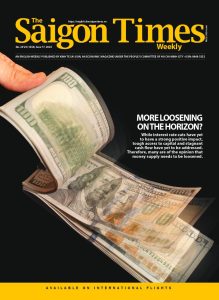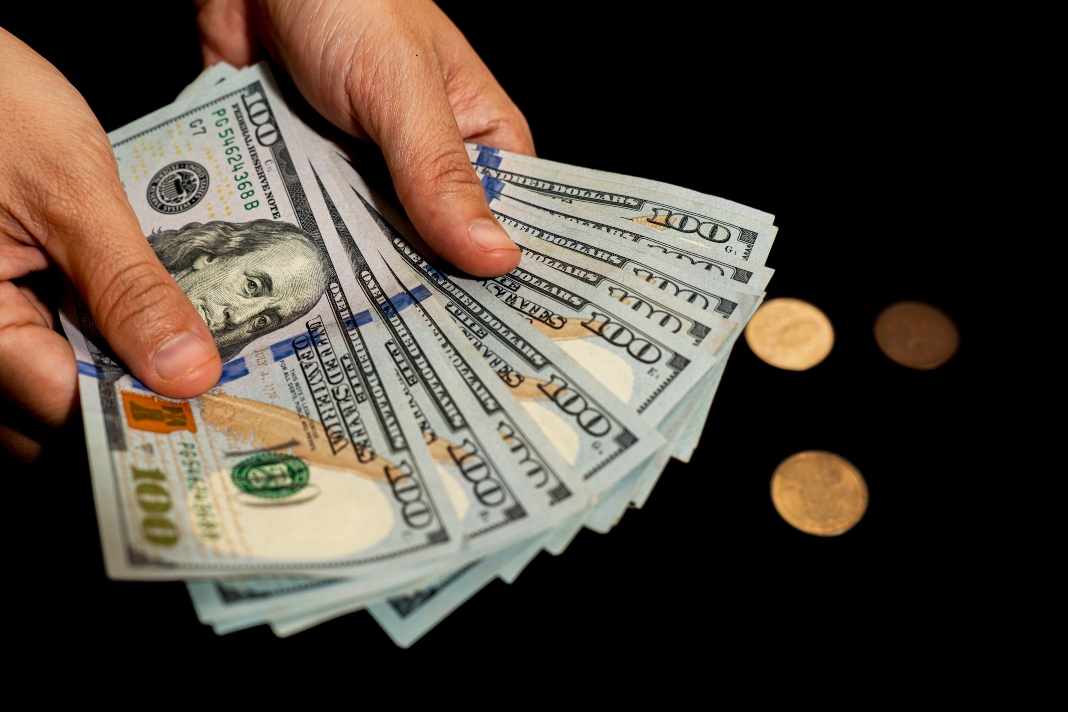While interest rate cuts have yet to have a strong positive impact, tough access to capital and stagnant cash flow have yet to be addressed. Therefore, many are of the opinion that money supply needs to be loosened.
Ample forex supply
The first five months of this year saw a trade surplus of up to US$9.8 billion, compared to the US$0.24 billion surplus recorded in the year-ago period. While the domestic business community incurred a trade deficit of US$8.67 billion, the foreign-invested sector enjoyed a trade surplus of US$18.56 billion. Despite concerns over the ebbing foreign trade, the faster deceleration of import spending resulted in a huge trade surplus, underpinning the forex market.
The domestic forex supply was further spurred by an inflow of US$10.86 billion via foreign investors’ M&A transactions, while the disbursement of foreign direct investment (FDI) stayed stable with US$7.65 billion. As such, trade and investment alone in the first five months this year generated US$28.31 billion, a record in the past many years. Such a huge amount excluded the forex revenue from tourism and remittance, which also contributed strongly to the country’s forex supply.
Data from the General Statistics Office show international arrivals in Vietnam in the first five months of the year totaled nearly 4.6 million, a 12.6-fold year-on-year increase.
Data on inbound remittances were not broadly available, but reports showed the amount remitted to HCMC in the first quarter grew over 19% year-on-year to over US$2.1 billion, and the final amount for this year may hit US$7 billion, increasing by 6-7% versus last year.
Such figures can be likened to bright dabs on the picture of forex supply in the first five months, swiping off concerns over forex pressures and the risk of forex depletion seen in 2022. Data from the State Bank of Vietnam (SBV) showed that the accumulative current account in 2022 faced a deficit of only US$1 billion, but the official settlements balance ran into a deficit of over US$22.7 billion, corresponding to the contraction of the country’s foreign reserves when the SBV had to sell foreign currencies to intervene in and stabilize the forex market and ease the forex pressure. Such developments resulted in a crunch in Vietnam dong liquidity, pushed up the interest rate in the final months of 2022, which were aggravated by worries about high inflation, interest rate hikes by the U.S. Federal Reserve, and some hiccups in the banking industry. However, the situation has all changed for the better, creating conditions for the regulator to loosen its monetary policy again.
Money supply loosening
Basically, to implement an accommodative monetary policy, the SBV can resort to the following vehicles: (i) stepping up recapitalization for commercial banks; (ii) reducing compulsory reserve requirement; (iii) injecting funds via open market operations; (iv) cutting policy rates; (v) raising the credit growth cap; and finally the forex policy.
Since early this year, the SBV has thrice lowered its policy rates, including the recapitalization rate, the rediscount rate, the deposit rate cap, the overnight rate for the inter-bank electronic payments and the interest rate applied to loans to finance short-term balances in the clearing transactions between the SBV and the credit institutions, and the lending rate cap for credits to priority sectors.
Regarding recapitalization, the SBV in recent years has rarely resorted to this vehicle. Those using this liquidity channel are normally banks with high State holdings, but such institutions always enjoy ample liquidity and are key lenders on the interbank market. Therefore, the amount of capital injected by the SBV via this channel is insignificant.
Regarding the compulsory reserve requirement, the SBV has almost not used this tool in the past 11 years. In fact, the reserve requirements are very low, at 3% for deposits shorter than 12 months and 1% for longer tenures, so the room for a further cut is limited. Therefore this tool is probably not suitable.
Regarding the credit growth cap, the key issue now rests with the economy’s capital absorption and the confidence in the economic prospect. Besides enterprises ineligible for credit or those having no need to borrow funds due to scaled-down business, there are also businesses downbeat about the economic outlook and refraining from any expansion scheme.
 The credit growth target for this year is between 14% and 15%. This credit expansion if realized is quite sizeable, as the scale of credits in the economy has exceeded VND11,900 trillion, which means an increase of VND1,700-1,800 trillion in credits for the economy. However, an SBV representative has recently revealed the credit growth in the first five months only touched 3.15%, and many banks still have vast room for credit expansion.
The credit growth target for this year is between 14% and 15%. This credit expansion if realized is quite sizeable, as the scale of credits in the economy has exceeded VND11,900 trillion, which means an increase of VND1,700-1,800 trillion in credits for the economy. However, an SBV representative has recently revealed the credit growth in the first five months only touched 3.15%, and many banks still have vast room for credit expansion.
Therefore, the most suitable vehicle for money supply loosening should go via open market operations and a flexible forex policy to boost forex buying, increase foreign reserves and inject a corresponding amount of Vietnam dong into the economy. In fact, this is also the tool actively employed by the SBV since early this year, as the central bank has bought US$6 billion so far this year. However, compared to the amount of US$28.31 billion mentioned above, the sum of US$6 billion is quite modest. Therefore, it is likely the SBV will continue to buy foreign currencies and inject more funds in Vietnam dong in the coming months, and will apply a flexible forex policy to support its forex moves.
In reality, although the forex rate, including the central bank’s reference rate, is still higher than that early this year, the SBV on May 29 lowered the buying price by VND50 to VND23,400 to the dollar. Compared to December last year when the SBV suddenly raised the buying price by up to VND900 due to severe shortage of the greenback, the move to lower the buying price now mirrors ample forex supply.
The policy to replenish foreign reserves by the SBV in previous years has helped keep interest rates stable, conditional on a stable forex rate. In those periods, to keep the supply of Vietnam dong from surging, the SBV often resorted to open market operations and issuance of T-bills to check the direct money supply.
Under the current situation when the cash flow remains dull in certain segments of the economy, the SBV, besides its moves to repeatedly lower policy rates as seen lately, can take advantage of ample forex supply to buy in foreign currencies, but without tightly controlling money supply by draining money from the market via open market operations as the inflationary pressure has now eased.









